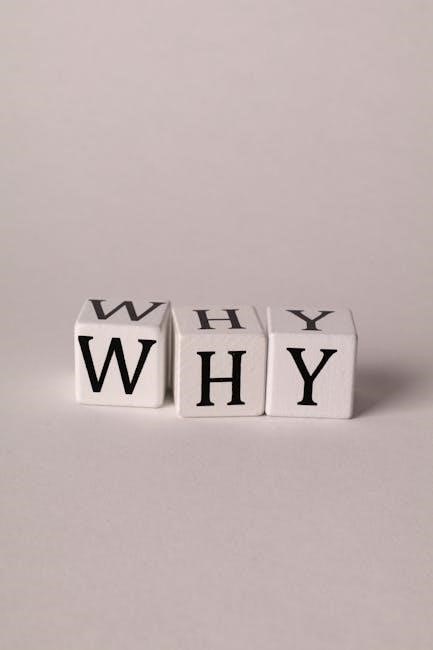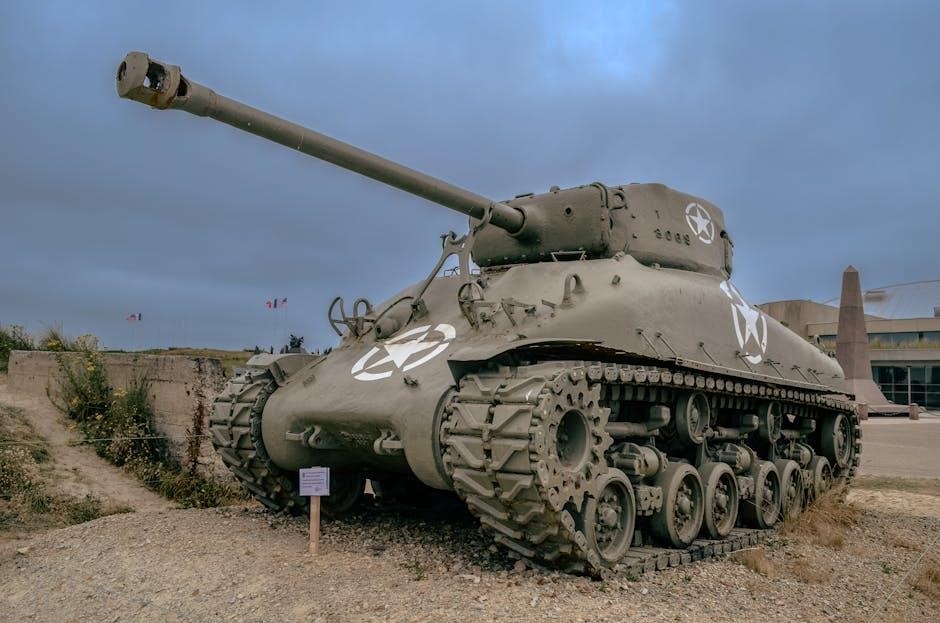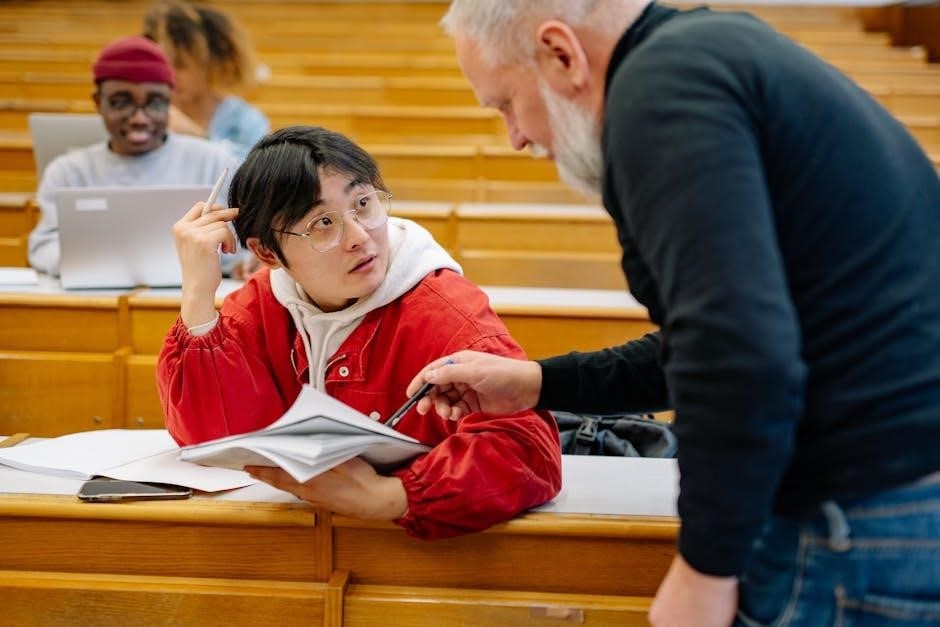Understanding World War 2 is crucial for grasping its impact on modern history. This section provides a comprehensive overview of key events, timelines, and historical significance through detailed questions and answers, offering insights into the war’s complexities and its lasting effects on global politics and society.
Overview of World War 2
World War 2 (1939–1945) was a global conflict involving Axis and Allied powers. It began with Germany’s invasion of Poland, escalating into a war that spanned continents. Key events included the Holocaust, Pearl Harbor, and the atomic bombings of Hiroshima and Nagasaki. The war resulted in unprecedented devastation, with over 70 million fatalities, making it the deadliest conflict in history. It ended with the Axis powers’ defeat, reshaping global politics and alliances, and leaving a lasting impact on international relations and societal structures.
Importance of Understanding WW2 History
Understanding World War 2 is essential for grasping its profound impact on global politics, society, and human rights. It provides lessons on the dangers of fascism, nationalism, and diplomatic failures. The war highlights the importance of international cooperation and the need to prevent similar atrocities. Studying WW2 fosters empathy and awareness of the Holocaust’s horrors, promoting tolerance and peace. It also underscores the significance of global institutions like the United Nations, established to maintain security and cooperation. This knowledge remains vital for addressing modern conflicts and building a more just world.
Structure of the Article

Key Events and Timelines
World War 2 unfolded through pivotal events like the invasion of Poland, Pearl Harbor, D-Day, and the atomic bombings, shaping its progression and outcome historically.
Major Battles and Their Impact
The major battles of World War 2, such as Stalingrad, El Alamein, Midway, and D-Day, were pivotal in shifting the war’s momentum. These battles showcased strategic brilliance and immense sacrifice, altering the course of the conflict. The Battle of Stalingrad marked a turning point on the Eastern Front, while El Alamein secured Allied control in North Africa. The Battle of Midway changed the Pacific theater’s dynamics, and D-Day launched the liberation of Europe. Each battle’s outcome significantly influenced the war’s progression and ultimate conclusion.
Important Dates and Anniversaries
Key dates in World War 2 include September 1, 1939, when Germany invaded Poland, marking the war’s start. December 7, 1941, saw Japan’s attack on Pearl Harbor, drawing the U.S. into the conflict; June 6, 1944, D-Day, was a pivotal invasion of Normandy. May 8, 1945, V-E Day, ended the war in Europe, while August 15, 1945, V-J Day, marked Japan’s surrender. These anniversaries remain significant, commemorating the war’s progression and its profound global impact.
Turning Points of the War
The Battle of Stalingrad (1942-1943) marked a major turning point as Soviet forces defeated the German army, halting their advance. The Battle of El Alamein (1942) in North Africa shifted momentum in favor of the Allies. The Battle of Midway (1942) in the Pacific decisively weakened Japan’s naval power. Additionally, D-Day (1944) and the Battle of the Bulge (1944-1945) were crucial in accelerating the Axis powers’ defeat. These events collectively altered the war’s trajectory, leading to the eventual Allied victory and the collapse of Axis forces.

Theaters of War
World War 2 spanned multiple theaters, including Europe, the Pacific, Africa, and the Middle East. Each region witnessed pivotal battles that shaped the war’s outcome and global impact;
African and Middle Eastern Theater
The African and Middle Eastern Theater played a significant role in World War 2, with key battles in North Africa and the Mediterranean. The Allies faced Axis forces in regions like Egypt, Libya, and Tunisia. The North African Campaign, particularly the Battle of El Alamein, marked a turning point. Control of the Suez Canal was crucial for maintaining supply lines. Meanwhile, in the Middle East, efforts focused on securing oil resources and preventing Axis expansion. These campaigns were vital for Allied success.

Key Figures and Leaders
World War 2 was shaped by influential leaders like Hitler, Mussolini, Churchill, Roosevelt, and Stalin. Their decisions and strategies significantly impacted the war’s progression and outcomes globally.
Political Leaders
World War 2 was shaped by prominent political leaders who dictated the course of the conflict. Adolf Hitler of Nazi Germany pursued aggressive expansion, while Benito Mussolini led Fascist Italy. On the Allied side, Winston Churchill’s leadership rallied Britain, Franklin D. Roosevelt guided the United States through the war, and Joseph Stalin’s Soviet Union played a pivotal role in defeating Nazi forces. Their decisions and ideologies significantly influenced the war’s outcome and its lasting impact on global politics and society. These leaders’ actions remain central to historical analysis.
Military Commanders
World War 2 saw the rise of influential military commanders whose strategies shaped the conflict. Dwight D. Eisenhower led Allied forces to victory in Europe, while George S. Patton was renowned for his aggressive tactics. On the Eastern Front, Georgy Zhukov’s leadership was pivotal for the Soviet Union. Erwin Rommel, the “Desert Fox,” was a key Axis commander in North Africa. These leaders’ decisions and innovations significantly influenced battle outcomes and the ultimate course of the war, leaving lasting legacies in military history and strategy.

Political Aspects
World War 2 was deeply influenced by political ideologies, alliances, and propaganda. Leaders like Hitler, Mussolini, and Stalin shaped the conflict, while wartime diplomacy and strategies defined its progression.
Alliances and Axis Powers
The Allies, led by Britain, the United States, and the Soviet Union, opposed the Axis Powers—Germany, Italy, and Japan—during World War 2. These alliances shaped global strategies, with the Axis seeking territorial expansion and the Allies aiming to preserve freedom and democracy. Key events, such as Germany’s invasion of Poland in 1939 and Japan’s attack on Pearl Harbor in 1941, drew nations into the conflict. The alliances’ unity and coordination were crucial in determining the war’s outcome and the post-war world order.
Propaganda and Ideology
World War 2 saw extensive use of propaganda to shape public opinion and morale. Both Axis and Allied powers employed media, films, and posters to promote their ideologies. Nazi Germany emphasized racial superiority and anti-Semitic narratives, while the Allies highlighted democratic values and the fight against tyranny. Propaganda aimed to unify support for the war effort, demonize enemies, and boost morale. It played a crucial role in influencing civilian attitudes and military resolve, reflecting the ideological clash between fascism and democracy that defined the conflict.

Causes and Consequences
World War 2 was fueled by political tensions, economic instability, and fascist ideologies. Its aftermath included massive casualties, geopolitical shifts, and a reshaped global order, impacting generations.
Root Causes of the War
The root causes of World War 2 were deeply intertwined with the aftermath of World War 1, including the harsh Treaty of Versailles, which left Germany economically devastated and politically unstable. The rise of fascist regimes in Germany, Italy, and Japan, fueled by nationalist ideologies, further escalated tensions. Economic instability, such as the Great Depression, created fertile ground for extremist leaders to rise to power. Additionally, the policy of appeasement by Britain and France allowed aggressive expansion by Axis powers, ultimately leading to the outbreak of war.
Economic and Social Aftermath
World War 2 left profound economic and social repercussions globally. Many nations faced severe economic devastation, with infrastructure destroyed and resources depleted. The Marshall Plan helped rebuild Western Europe, while the Soviet Union dominated Eastern Europe, fostering a divide that led to the Cold War. Socially, the Holocaust exposed the horrors of genocide, leading to a renewed focus on human rights. Millions were displaced, and populations grappled with trauma. The war also spurred technological advancements and social changes, including the rise of the United States and the Soviet Union as superpowers, reshaping the global landscape.

Military Strategies and Battles
World War 2 saw innovative strategies like Blitzkrieg and island-hopping, alongside pivotal battles such as Stalingrad and Normandy, shaping the war’s trajectory and decisive outcomes.
Major Strategies Employed
During World War 2, Axis and Allied forces utilized diverse military strategies to gain advantages. The Germans employed Blitzkrieg, combining rapid ground and air assaults to overwhelm enemies quickly. The Soviets adopted a scorched-earth policy, denying resources to advancing forces. The Allies relied on strategic bombing campaigns and amphibious assaults, such as D-Day, to liberate occupied territories. Naval blockades and island-hopping in the Pacific were crucial for isolating Japan. These strategies, while varying in execution, significantly influenced the war’s outcome and demonstrated adaptive military thinking amid unprecedented global conflict.
Notable Battles and Their Outcomes
World War 2 saw pivotal battles that shaped its course and conclusion. The Battle of Stalingrad marked a turning point on the Eastern Front, halting Nazi advances and showcasing Soviet resilience. In North Africa, El Alamein secured a crucial Allied victory, pushing Axis forces back. The D-Day invasion of Normandy opened a western front, accelerating Germany’s defeat. The Battle of Midway in the Pacific thwarted Japanese expansion, while the Battle of Berlin ended with Hitler’s death and Germany’s surrender. These battles were decisive in determining the war’s outcome and the Axis Powers’ eventual collapse.

The Holocaust
The Holocaust, a systematic genocide during World War 2, resulted in the murder of six million Jews and millions of others deemed undesirable by the Nazi regime.
Genocide and Its Impact
The Holocaust, a systematic genocide during WWII, resulted in the murder of six million Jews and millions of others. The Nazis targeted Jews, Roma, disabled individuals, and political dissidents through mass shootings, gas chambers, and forced labor in concentration camps. This atrocity caused immense human suffering, tearing families apart and leaving survivors with lifelong trauma. The Holocaust’s impact extends beyond WWII, serving as a stark reminder of racism, prejudice, and the dangers of totalitarianism, while emphasizing the importance of remembrance and education to prevent such horrors from recurring.
Resistance and Liberation
During WWII, resistance movements across Europe fought against Nazi occupation, disrupting supply lines and gathering intelligence. Groups like the French Resistance and Polish Partisans played crucial roles in weakening Axis forces. Liberation efforts by Allied forces, such as D-Day and the advance into Germany, ultimately led to the freeing of concentration camps. The liberation of Auschwitz in 1945 revealed the horrors of the Holocaust, while resistance movements symbolized resilience and hope. Their bravery significantly impacted the war’s outcome and remains a testament to human courage against oppression.

Home Front Contributions
Civilians played a vital role in WWII through rationing, volunteering, and war production. Women entered the workforce in unprecedented numbers, supporting the war effort and reshaping societal roles.
Civilian Involvement
Civilians contributed significantly to WWII efforts through various roles. Rationing and resource conservation were widespread, ensuring supplies for troops. Women entered factories, producing weapons and equipment, while others joined volunteer services. Communities organized drives for scrap metal and bond purchases, fostering a sense of unity. Educational programs emphasized the importance of home front support, encouraging participation in the war effort. This collective involvement was crucial in sustaining military operations and maintaining morale during challenging times.
War Production and Rationing
During WWII, governments mobilized industries to prioritize war production, shifting focus from consumer goods to military equipment. Factories produced weapons, ammunition, and vehicles, while rationing systems ensured equitable distribution of scarce resources. Civilians faced restrictions on food, fuel, and clothing, with governments issuing ration cards. Women played a pivotal role in manufacturing, stepping into jobs vacated by conscripted men. This dual effort of production and conservation was vital in sustaining military campaigns and maintaining civilian life during the war.
Technology and Weapons Development
World War 2 saw significant technological advancements, including radar, jet engines, and atomic bombs, which greatly influenced the war’s outcome and set the stage for future military innovations.
Military Innovations
World War 2 drove unprecedented military innovation, transforming warfare forever. Radar systems enabled early detection of enemy movements, while jet engines revolutionized air combat. The development of the atomic bomb marked a lethal turning point, demonstrating unparalleled destructive power. These advancements not only shaped the war’s outcome but also laid the foundation for modern military technology, influencing strategies and weapons development for decades to come.
Impact of New Technologies
New technologies during World War 2 significantly altered warfare and its outcomes. Radar systems provided critical early warnings for air defenses, while jet engines and rockets ushered in a new era of speed and firepower. The atomic bomb, a culmination of scientific innovation, demonstrated unprecedented destructive power, reshaping global military strategies. These advancements not only influenced the war’s course but also set the stage for future technological developments, leaving a lasting impact on modern warfare and global security.

Resources and References
Explore detailed PDF guides, historical archives, and scholarly articles for in-depth insights into World War 2. Recommended books include “The Rise and Fall of the Third Reich” and “Man’s Search for Meaning.” Online archives like the National Archives and World War II Museum offer primary sources and research materials for further study.
Recommended Reading and PDFs
by Gerhard L. Weinberg is ideal for concise learning. Online archives like the National Archives and Library of Congress offer free PDF resources, including military documents and eyewitness accounts. Educational platforms also provide PDF study guides for students, covering key events and analyses.
Archival Sources
Explore primary sources from reputable archives like the National Archives, offering WWII documents and records. The Library of Congress provides access to historical manuscripts and photographs. For military insights, visit the Imperial War Museum archives. The United States Holocaust Memorial Museum archives document personal stories and historical events. These resources offer authentic perspectives, aiding in-depth research and understanding of WWII history and its global impact.
World War 2 remains a pivotal event in history, shaping modern geopolitics and societies. Its lessons underscore the importance of diplomacy, peace, and understanding to prevent future conflicts.
Final Thoughts
Reflecting on World War 2, it is evident that the war profoundly shaped global history, leaving lasting impacts on politics, society, and international relations. The lessons learned emphasize the importance of diplomacy, peace, and understanding in preventing future conflicts. By studying the root causes, key events, and consequences, we gain valuable insights into the complexities of war and the need for global cooperation to foster a more peaceful world.
Encouragement for Further Study
Delving deeper into World War 2 offers a richer understanding of its complexities and legacies. Explore historical texts, documentaries, and primary sources to gain nuanced insights. Engage with historians and scholars to broaden your perspective. The war’s impact on global politics, society, and culture is profound, making it a vital area of study for anyone interested in history. By continuing your research, you can uncover hidden stories and appreciate the lessons it holds for shaping a better future.